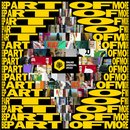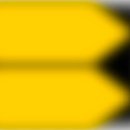Make the leap from creative practitioner to leader with these tips
A Masterclass trainer breaks down his three steps to becoming a good creative leader

“Human creativity is one of those things that we all have, particularly at a younger age, that we seemingly outgrow,” founder of The Ideas Business, Wade Kingsley, observes. “We don't pay as much attention to it and we think it's a bit of a waste of time, or that it is just about painting and music. It is all those things, but we forget about the creative expressions that come outside of that.”
Kingsley, who is one of the trainers for D&AD’s bespoke Team Training courses, believes that creative expression means much more that we give it credit for, and that harnessing creativity can help practitioners make the leap to becoming good creative leaders. Here, he breaks down how to do this in three useful steps.
Cultivate curiosity
“Curiosity is one of those things, too, that when you're a kid, it's really inbuilt. We learn everything by asking questions,” Kingsley explains. “We don't really care what kind of questions, ‘Why is the sky blue? How can I have something else to eat?’” Retaining that ability to ask questions as an adult is a crucial skill. “One of the things that I find that creative practitioners do well is maintain curiosity, usually across a broad range of subjects,” he elaborates. “A lot of people say, ‘What's the difference between someone who's creative and not?’ Well, it's a belief and a competence, but the very first thing that starts the engine is how curious they are.”
What this means in practice is not just maintaining an active interest in the world and how things work but ensuring there are “lots of inputs, and taking things from different places and connecting them together.” This will equip you to take your individual creativity towards a place of leadership. “If you as a leader can cultivate that curiosity, if you can actually create an environment where curiosity is rewarded — it's actually encouraged and allowed to happen — then you're putting in place one of the core tenets of creative practice.” However, it’s about asking the right kind of questions — especially ones that aren’t about getting to the answer as quickly as possible.
“What about those questions that are just helpful to explore?” Kingsley adds. If you can find that way to move forwards “without necessarily knowing the destination, you might find the road less travelled. And with creative work, the road less travelled means original interpretations.” He suggests this could be achieved by asking the unexpected or ‘dangerous’ question. “What's a question that we can ask the client that really has nothing to do with the brief but might unlock a piece of information?”
Make space for risk
With curiosity, there should always come a healthy dose of risk, but, like curiosity, it can become rather a stale term. “We often talk about brave work in the industry: ‘Oh, that's very brave. That's very courageous,’” Kingsley says. But to get to that point, you’re going to have to build in time and energy for creative risk-taking. “What tends to happen is if a leader hasn't made room for it in their process or in their team, then people rush to the finish line and we end up trading off risk for efficiency.” It can be hard in a results-oriented world to slow down, or not merely follow pre-established formulas. Whether it’s endless remakes of the same movie franchise, or a particular genre of book that every other publisher wants to cash in on, the creative world loves a safe bet. But safe bets don’t push the narrative forwards.
“We could say that 70% of our time is going towards delivering exactly what the client wants. ‘They've asked for this, let's give them that.’ Maybe we can find 20% of our time, we're taking them just one step further. ‘You say you want this, we've had a little bit of a think about it and got to stretch a little,’ and then the 10% is where you can really go all out,” Kingsley says. This kind of model means you’ll still be doing what’s expected but not getting stuck in the same ruts. “Clients don't know what they like until they see it, generally,” he adds. “It's very hard to be creative and abstract. You need to show, explain, tell a story, or develop something that they can look at and assess.” If you put risk at the top of the agenda rather than as an afterthought, you might be able to bring them something new — and once again prioritise the journey that took you there. As a leader, it’s your job to show by example. Not every risk pays off. Can you be vulnerable with your team, or examine the times where it didn’t go as expected? Can you create a space where they are willing to try, fail, and learn something valuable?
Be a helper
How do you identify the moment where your creative practice might benefit from a shift into leadership? Often, Kingsley says, it’s about observing your own impulses and behaviours. “The true tenet of leadership is being supportive of other people. Really, if you're an official leader — you've got the title, you've got the office — then your job is to get the best out of your team. But I think sometimes practitioners can feel a little bit of a pivot point when they're saying, ‘Okay, I feel like I'm helping more people now,’ or ‘I'm supporting more people in developing their skills.’”
Emerging leaders are often identified by their own recognition that they are enjoying helping others reach their full potential. “You might not realise that at the time, but you don't have to be a mentor or a manager or have a formal title,” he says. Whether you’re aiding someone else to punch up a bit of copy, solve a design problem or crack a solution to a brief, “really what you're doing is leading because you're showing them and helping them.” It’s the point where you don’t just want to use the tools for yourself. Notice this impulse, and you’ll be able to hone it better.
Unique, collaborative and inspiring, D&AD’s Team Training programmes are shaped specifically to your team’s needs, and always delivered by our roster of exceptional industry professionals. Learn more here. You can also explore do at your own pace courses here, as well as upcoming in-person and online teaching here.



